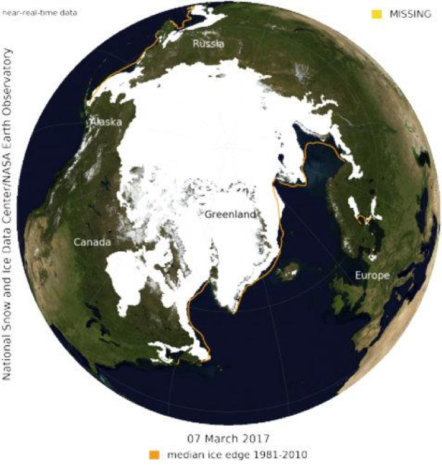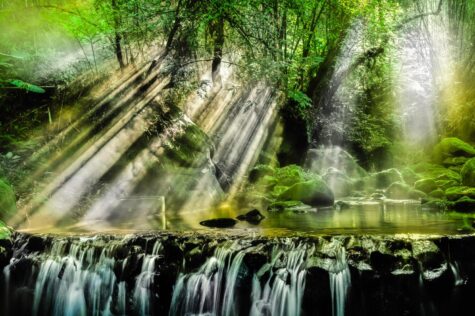Scientists Ramp Up Arctic Research Following New Discoveries
May 30, 2017
The Arctic.
Just the word brings to mind images of frozen, barren deserts of ice, and while that may be true on the surface, under the ice it’s a very different story.
Recent research and discoveries have revealed a significant change in the production of algae and phytoplankton in Arctic oceans.
Until the 1970s, scientists were not aware of the existence of phytoplankton and algae under the surface of the Arctic ice. Even now, research on the creatures is not extensive, though researchers are now putting more focus on the subject.

One thing that scientists and researchers have found in their investigations is the effect that light availability has on algae and phytoplankton growth. Algae and phytoplankton in the Arctic only bloom when enough light is available for them to do so, because the Arctic sea ice is melted enough for sufficient light to shine through. This means that typically, algae and phytoplankton bloom in around September. However, scientists are quickly discovering that blooms are occurring sooner and sooner, even as early as July.
Christopher Horvat, an oceanographer at Harvard, and his colleagues published a research article on the subject in March of 2017. The paper introduced the idea that algae and phytoplankton blooms in the arctic have been increasing over the last thirty years. Horvat and his colleagues believe this may be in part to global climate change.
Climate change may affect the increasingly large and common blooms, says Horvat. Rising temperatures create thinner sea ice, which lets enough light through for the aquatic organisms. Over past decade, the necessary light conditions for blooms have existed over almost 30 percent of the Arctic region, as was stated in Horvat’s article. And that percentage is just in July, months before typical algae and phytoplankton blooms occur.
The increase in algae production may have some positive effects. Algae needs to absorb CO2 to survive, as do most plants. Carbon dioxide is one of the main causes of global warming because the gas warms the atmosphere, so having a little extra algae may help the planet in the long run.
However, there may be some downsides to the change in when and for how long algae and phytoplankton live in the arctic. Phytoplankton and algae are the very basis of the aquatic food web, meaning that their availability affects all other organisms in the food system. When there is not enough light for algae or plankton production, most of the aquatic life is believed to be in a sort of hibernation. Blooming and growing earlier in the season may not be an issue for algae and plankton, but scientists aren’t sure how other creatures will be able to adjust.

“This is going to shift the ecosystem dramatically over a very short period of time, and whether the entire thing [ecosystem] is adapted to that is a question we don’t quite know,” says Horvat.
Overall, the changing climate and its effects on arctic phytoplankton and algae production may have its ups and downs. Horvat agrees with many other scientists in believing that more research, particularly field research, is needed before they can truly understand what is happening beneath the arctic ice.
In this image provided by the National Snow and Ice Data Center and NASA, shows how low sea ice levels were in the Arctic this winter, alarming climate scientists. During the winter, Arctic sea ice grew to 5.57 million square miles (14.42 million square kilometers) at its peak, but that’s the smallest amount of winter sea ice in 38 years of record keeping, beating the record set in 2015 and tied last year. Sea ice in March of this year was smaller than last year by an area about the size of the state of Maine. (National Snow and Ice Data Center and NASA via AP)
In this Aug. 3, 2014, file photo, an algae bloom covers Lake Erie near the City of Toledo water intake crib about 2.5 miles off the shore of Curtice, Ohio. Several environmental groups in Ohio and Michigan are suing the U.S. Environmental Protection Agency, saying the agency isn’t doing enough to protect Lake Erie from toxic algae. The federal lawsuit filed Tuesday, April 25, 2017, said the EPA needs to step in and take action under the Clean Water Act. Algae blooms in the shallowest of the Great Lakes have fouled drinking water in recent years and are a threat to wildlife and water quality. (AP Photo/Haraz N. Ghanbari, File)

